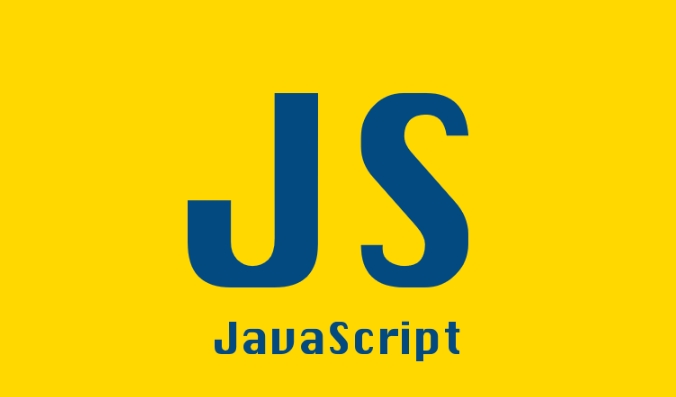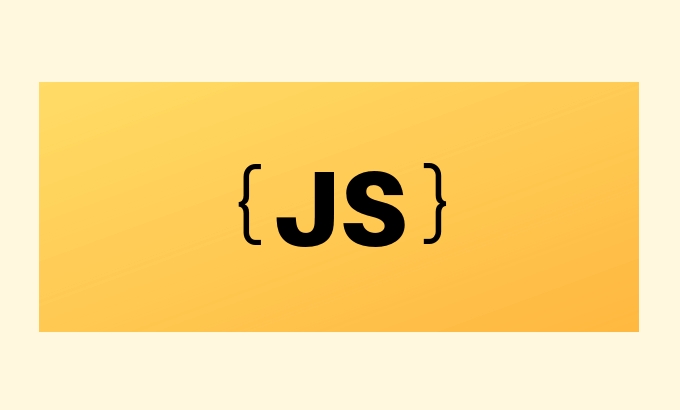Custom ESLint rules can unify code style and reduce bugs. First, understand the rules structure of ESLint based on AST and write detection logic, such as prohibiting the use of console.log; second, create a rule file in the project and configure .eslintrc.js to refer to the rules; finally, pay attention to the familiarity of AST structure, avoid false positives and missed reports, optimize performance and improve configurability. Through these three steps, custom rules can be implemented and integrated to improve team development efficiency and code quality.

It is important to maintain a consistent code style and quality when writing JavaScript code. Although ESLint provides a lot of built-in rules, sometimes you still need to customize some specific inspection logic according to project needs. Implementing custom ESLint rules is not complicated. As long as you understand the basic structure and process, you can easily get started.

Why use custom ESLint rules?
Many teams will have some conventional coding specifications during development, such as prohibiting the use of certain APIs, requiring functions to have JSDoc annotations, or restricting the use of specific variable names. These rules are difficult to override through common configurations, and you need to customize ESLint rules to enforce these specifications. It not only helps the team unify the code style, but also detects potential problems in advance and reduces the probability of bugs.
How to create a basic custom ESLint rule?
To write a custom rule, you must first understand the rule structure of ESLint. The ESLint rule is analyzed based on AST (Abstract Syntax Tree). You need to write a function to receive the current node and determine whether it meets expectations.

The simplest rule structure is as follows:
module.exports = {
create(context) {
return {
CallExpression(node) {
if (node.callee.name === 'console' && node.callee.property?.name === 'log') {
context.report({ node, message: 'Don't use console.log' });
}
},
};
},
}; In this example, we detect all places where console.log is called and prompt the developer to avoid using it. You can save this file as a .js file and then reference it in the ESLint configuration.

How to integrate custom rules into a project?
Integrating custom rules is mainly divided into three steps:
- Put the rule file in the right place, such as
eslint-rules/ - Add
rulesfield to your rules in the ESLint configuration file - Make sure ESLint loads these rules correctly
For example, in .eslintrc.js , you can configure it like this:
module.exports = {
// ...Other configuration rules: {
'no-console-log': ['error', require('./eslint-rules/no-console-log')],
},
};If you share these rules internally in the team, you can package them into npm packages to facilitate multiple projects reuse.
Frequently Asked Questions and Notes
When writing custom rules, there are several error-prone areas that need to be paid attention to:
- Unfamiliar with AST structure : It is recommended to use AST Explorer to view the node structure corresponding to different statements.
- False or underreport : In some cases, the rules may be triggered incorrectly or not, requiring careful testing of various boundary situations.
- Performance issues : If the rule processing logic is too heavy, it may affect the running speed of ESLint, especially in large projects, pay more attention to optimization.
- Rule configurability : If you want the rules to be flexibly adjusted according to different projects, you can add a
meta.schemafield tocreatemethod to support configuration items.
Basically that's it. Writing custom ESLint rules may be a bit of a barrier at the beginning, but once you master the basic routines, you will find that it is very practical and can greatly improve the code quality and consistency of the project.
The above is the detailed content of Implementing Custom ESLint Rules for JavaScript. For more information, please follow other related articles on the PHP Chinese website!

Hot AI Tools

Undress AI Tool
Undress images for free

Undresser.AI Undress
AI-powered app for creating realistic nude photos

AI Clothes Remover
Online AI tool for removing clothes from photos.

Clothoff.io
AI clothes remover

Video Face Swap
Swap faces in any video effortlessly with our completely free AI face swap tool!

Hot Article

Hot Tools

Notepad++7.3.1
Easy-to-use and free code editor

SublimeText3 Chinese version
Chinese version, very easy to use

Zend Studio 13.0.1
Powerful PHP integrated development environment

Dreamweaver CS6
Visual web development tools

SublimeText3 Mac version
God-level code editing software (SublimeText3)
 How to delete eslint in react
Dec 30, 2022 am 09:46 AM
How to delete eslint in react
Dec 30, 2022 am 09:46 AM
How to delete eslint from react: 1. Execute the "npm run eject" command; 2. Modify the code in package.json to ""eslintConfig": {"extends": ["react-app","react-app/jest" ],"rules": {"no-undef": "off"...}"; 3. Restart the project.
 Tool sharing: realizing automated management of front-end buried points
Dec 07, 2022 pm 04:14 PM
Tool sharing: realizing automated management of front-end buried points
Dec 07, 2022 pm 04:14 PM
Buried points have always been an important part of the H5 project, and buried point data is an important basis for later business improvement and technical optimization. In daily work, students from product or business departments often come to ask, "What are the hidden points in this project now?", "Where is this hidden point used?" Questions like this are basically asked and checked. The code is very inefficient.
 Using ESLint in Vue-cli for code standardization and bug detection
Jun 09, 2023 pm 04:13 PM
Using ESLint in Vue-cli for code standardization and bug detection
Jun 09, 2023 pm 04:13 PM
With the continuous development of front-end technology, the problems we face have gradually become more complex, which not only requires our code to have a reasonable structure and good modular design, but also requires code maintainability and execution efficiency. In this process, how to ensure the quality and standardization of the code has become a difficult problem. Fortunately, the emergence of code standardization and bug detection tools provides us with effective solutions. Using ESLint for code standardization and bug detection in the Vue.js framework has become a common choice. 1. ESLint
 How to use ESLint to unify code style in Vue
Jun 10, 2023 pm 10:22 PM
How to use ESLint to unify code style in Vue
Jun 10, 2023 pm 10:22 PM
Vue is a popular framework for developing web applications using JavaScript. Since Vue projects tend to become large and complex, a unified coding style becomes crucial. ESLint is an open source JavaScript static code analysis tool that can help developers detect and fix potential errors and problems in the code during the development process. In Vue, using ESLint ensures code quality and consistency. The following are the steps on how to use ESLint to unify the code style in Vue.
 What are the benefits of using a linter like ESLint?
Jun 28, 2025 am 01:01 AM
What are the benefits of using a linter like ESLint?
Jun 28, 2025 am 01:01 AM
Using linter tools such as ESLint can effectively improve the quality of the code. Its core functions include: 1. Discover common errors in advance, such as undeclared variables, unreachable code, error loop conditions, lack of break statements, misuse of assignments in conditions, etc.; 2. Unify the team's coding style, ensure code consistency by customizing rules or inheriting existing configurations (such as Airbnb and StandardJS); 3. Improve long-term maintainability, standardize naming, function complexity, avoiding insecure syntax, etc., and ultimately realize more reliable, easy-to-read, and easy-to-maintain JavaScript code.
 How to enable ESLint autofix on save in vscode settings?
Jul 02, 2025 am 12:16 AM
How to enable ESLint autofix on save in vscode settings?
Jul 02, 2025 am 12:16 AM
To automatically run ESLint repair when saving VSCode, you need to complete the following steps: 1. Make sure that the project has been installed and configured ESLint; 2. Enable the automatic repair function when saving in VSCode; 3. Set ESLint as the default formatting tool. First, install ESLint through npm or yarn and create .eslintrc file; then enable eslint.autoFixOnSave and editor.formatOnSave options in VSCode settings; finally set ESLint as the default formatting tool, you can specify editor.defaultFormatte through the right-click menu or in settings.json
 Creating Custom ESLint Rules for Your Project
Jul 25, 2025 am 12:30 AM
Creating Custom ESLint Rules for Your Project
Jul 25, 2025 am 12:30 AM
Create custom ESLint rules first and configure them. eslintrc.js is loaded through require or local plug-in; 2. Write rules to define meta and create functions, check code patterns through AST traversal, such as prohibiting import of specific paths; 3. Use eslint-rule-tester to write test cases to ensure that rules behave correctly in valid and invalid code; 4. Use AST deep analysis to implement advanced functions, such as restricting function calls, naming specifications or environment variable access; 5. Make rules reusable through schema configuration, and support sharing across projects in private npm packages or monorepo, ultimately implementing automated enfo of team coding specifications
 Implementing Custom ESLint Rules for JavaScript
Jul 16, 2025 am 02:47 AM
Implementing Custom ESLint Rules for JavaScript
Jul 16, 2025 am 02:47 AM
Custom ESLint rules can unify code style and reduce bugs. First, understand the rules structure of ESLint based on AST and write detection logic, such as prohibiting the use of console.log; second, create a rule file in the project and configure .eslintrc.js to refer to the rules; finally, pay attention to the familiarity of AST structure, avoid false positives and missed reports, optimize performance and improve configurability. Through these three steps, custom rules can be implemented and integrated to improve team development efficiency and code quality.






